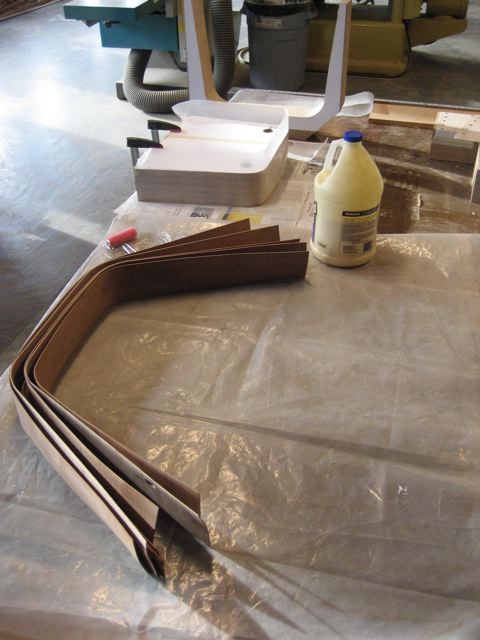Question
What are my options for bending wood for furniture? I have tried cutting kerfs in oak, and the boards splintered when I bent them to shape. I do not have the time to make a wood steamer, and regular plywood won't bend the amount that I need it to. I have heard of a special type of plywood that bends that would then take a veneer. Or there is a way of "layering" a bent piece on with laminated pieces?
Forum Responses
There are many ways, such as laminating 1/4" or 1/2" stock in a form. Pliable MDF is also an option, should you choose to veneer. These are just a couple and it really depends on the component you are building.
Comment from contributor U:
I have been bending solid timber for 23 years for architectural and furniture components. We developed a process that has the ability to bend up to 220 pieces per hour, from dry, pre-machined, ready-to-use wood in a lot of cases. Like all processes, we have limitations. Steam bending is stretching fibres, compaction and compression, elevated using the end and back pressure around a jig with clamps to hold to shape. Our process softens the structure, particularly the lignin, allowing us to bend and slide the fibres. Impregnation then drying happens within cycle times of 6 minutes. The new memory is locked, by shutting the pit holes and not allowing reabsortion of moisture into the fibre. Drying required is extremely precise and fast. All species require different recipes. There are so many, but in general the softwoods are more difficult. You in the USA and Europe are blessed with excellent bending timbers. We are a stand alone wood bending operation. Solid is our preference, however, to achieve thicker dimensions due to the economics of impregnation times, we bend and laminate in one process.
For those wishing to set up a simple steam system, you do not want superheated steam. Wet steam is most effective. This will work: a generator of steam (jug or whatever) steaming into the centre bottom of a level pipe (say diameter 150mm (6") or whatever is required) with a piece of sack draped over each end. Put a couple of stainless horizontal wires through the pipe to ensure timber doesn't sit in the water created on the bottom. Success will come with practice.
